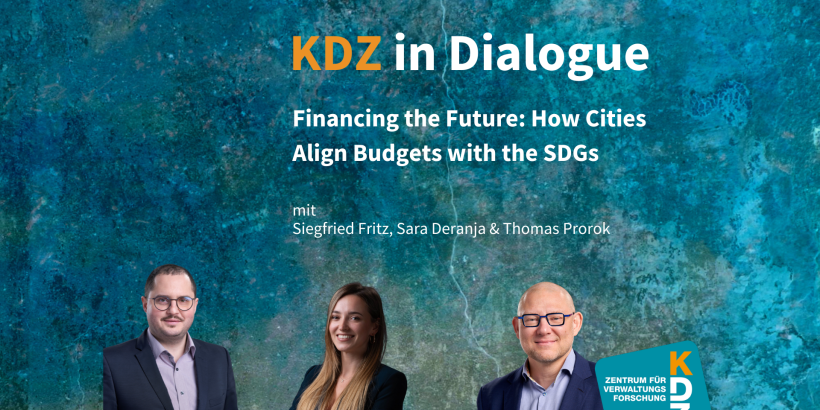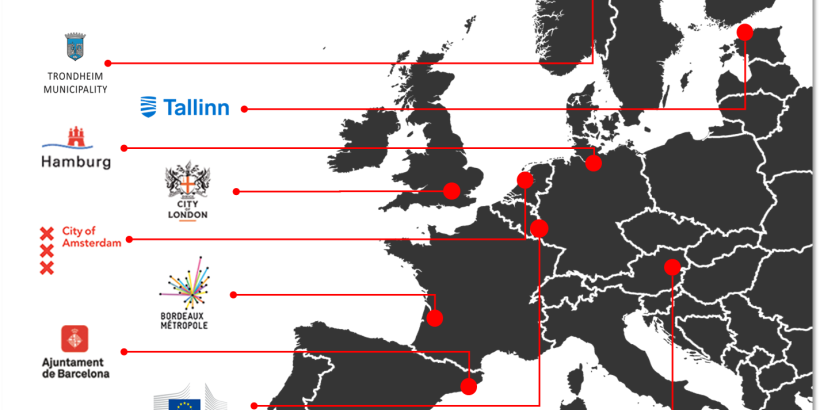The European Commission will present the proposal for the next Multiannual Financial Framework 2028+ in July 2025. With the communication “The Road to the Next Multiannual Financial Framework,” the Commission has presented its vision for the further development of the EU budget towards a more strategic, flexible, and performance-oriented EU financing system. In light of geopolitical uncertainties, economic challenges, and social transformations, the European Commission is calling for new funding priorities.
Funding Priorities
The central focus, according to the Draghi Report, is on strengthening competitiveness and innovation. A new European Competitiveness Fund should be designed to specifically support strategic technologies, research, and industrial innovations. A key objective is to close the investment gap compared to the US and Asia by improving the framework conditions for start-ups and growth companies within the EU.
Another emerging priority is European security and defense policy. Given the current geopolitical situation, cooperation within the defense industry is to be strengthened. Additionally, funds for crisis response and security should be mobilized more swiftly.
Migration and asylum policy remain key issues. The EU aims to financially secure the implementation of the new Pact on Migration & Asylum, enhancing external border protection and managing irregular migration more effectively.
Cohesion and structural policy are also set for reform. The Commission plans to simplify funding programs to direct investments more quickly and efficiently where they are most needed. At the same time, there will be a stronger emphasis on social cohesion and labor market promotion.
Sustainability, climate protection, and agriculture will continue to play a significant role, but their focus will be adapted to current challenges, likely leading to a somewhat reduced emphasis. The Common Agricultural Policy (CAP) is to become more sustainable and resilient, while new financing models will be introduced for climate-neutral technologies and energy independence. Given rising climate and weather-related risks, the EU also plans to improve financial safeguards against natural disasters and extreme weather events.
The geopolitical landscape further necessitates a new financial strategy for EU enlargement. The Commission is planning increased financial support for the Western Balkans, Ukraine, Moldova, and Georgia to strengthen their prospects for EU accession. At the same time, investments under the Global Gateway Initiative will be strategically directed toward key partner countries.
Modernization of EU Finances
To finance these new priorities, the European Commission proposes modernizing EU finances. A key aspect is the introduction of new own resources to secure the repayment of NextGeneration EU debts starting in 2028. Planned revenue sources include the Emissions Trading System (ETS), the Carbon Border Adjustment Mechanism (CBAM), and new tax models on corporate profits. Additionally, the EU budget is set to become more flexible to enable a faster response to crises.
New Financing Rules under Discussion
One key proposal concerns performance-oriented financing. The European Commission aims to focus even more on results-based funding, ensuring that resources are allocated not just based on expenditures but on the achievement of specific objectives. Programs such as the Recovery and Resilience Facility and the Ukraine Facility serve as models for this approach. The goal is to better align EU expenditures with the EU’s political objectives.
Another important step is the more dynamic adjustment of the EU budget. While the current MFR has been largely fixed over seven years, future frameworks are expected to include regular reviews and greater flexibility for reallocations. This will allow funds to be redirected more effectively to where they are most urgently needed. Overall, the EU budget is to become more strategic, adaptable, and efficient.
Moreover, the flexibility of fund allocation and adjustment options is set to increase significantly. Currently, over 90% of funds are pre-allocated, which limits the EU’s ability to react in crisis situations. In the future, there will be fewer program-bound funds and more special instruments to enable quicker responses to emerging challenges, such as crises, natural disasters, or geopolitical changes.
Another planned reform is the simplification of financing programs. The current system, with over 50 different programs, is often too complex. A centralized access point and clearer structures are intended to facilitate access to funding.
Ensuring compliance with the principles of the rule of law when using EU funds should be self-evident. However, the stronger emphasis on this principle and the clear commitment to protecting the EU’s financial interests suggest that the European Commission may introduce new mechanisms to enforce compliance with these requirements.
Conclusion
While the new funding priorities are widely accepted, the proposed new own resources and financing rules are the subject of intense political debate. Cities and municipalities will be particularly affected by these new funding priorities. With a stronger focus on regions needing greater economic support, some funding cuts are likely in other areas.
The performance-oriented financing rules could lead to higher bureaucratic requirements and increased monitoring. Meanwhile, the principles of flexibility and dynamism might contradict the planning security that is crucial for local financing.
With the new rules, the European Commission will gain significantly more control over EU finances and play a stronger role in determining financial allocations. On the other hand, the Commission emphasizes the importance of EU multi-level governance, place-based approaches, and partnership principles. This means that the implementation of EU priorities must be carried out jointly with Member States, regions, and municipalities.
Until May 2025, stakeholders have the opportunity to contribute proposals for the next Multiannual Financial Framework through consultations.
Link on the communication: “The Road to the Next Multiannual Financial Framework”



